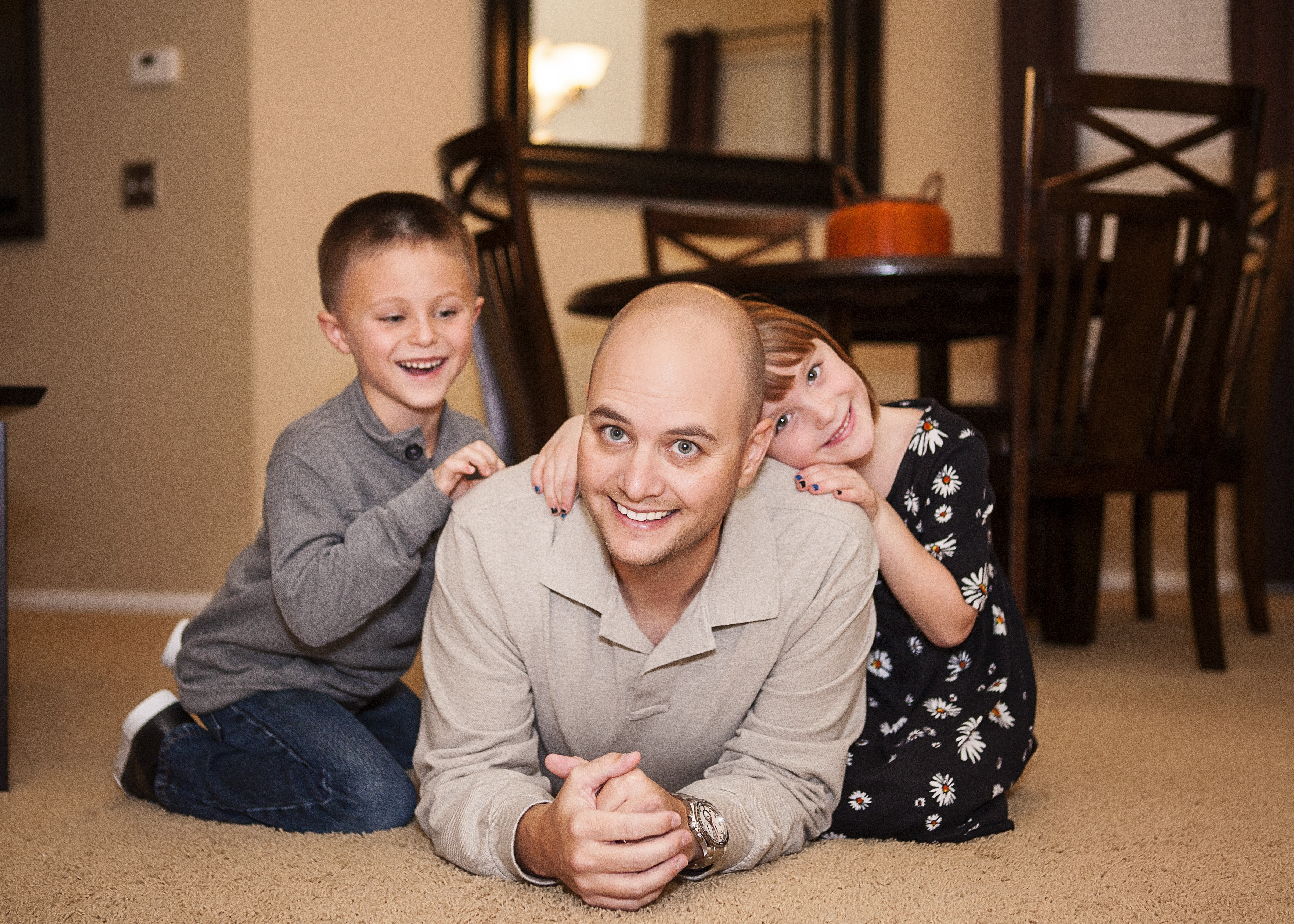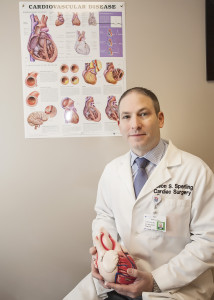Successful equation | by

Detection plus surveillance can equal healthy lives for BAV patients
Even though Angelo Galasso underwent open-heart surgery this fall, the 39-year-old Parker resident considers himself lucky. Unlike many people with his common congenital heart anomaly, doctors spotted his bicuspid aortic valve at birth, allowing him to live heart-smart and under a cardiologist’s watchful eye. And when he suddenly felt ill this summer and learned his time had come for the major life-preserving surgery, Galasso’s doctor revealed another stroke of luck: A special program focused on his condition had just opened up outside his backdoor.
“I knew I was fortunate timing-wise,” Galasso says of the launching of HealthONE’s Rocky Mountain Aneurysm and Bicuspid Aortic Valve program. Galasso underwent aortic root aneurysm replacement with heart surgeon and program director Dr. Jason Sperling at The Medical Center of Aurora this fall. Now back to his life, which includes a wife, twin 6-year-olds and a mortgage-business career, Galasso wants other patients to know: With the expert medical care the new program provides, they can live a good, full life with BAV.
Although BAVs recently came to Coloradoans’ attention when former Broncos Coach John Fox’s diagnosis became public, the condition and its potential seriousness are not well-known, Sperling says. “Laypersons, and even many doctors, don’t fully understand the implications of BAV disease,” says Sperling, who believes that BAVs are even more common than the literature suggests (about 1 in 50 people in the general population). Yet preventing negative outcomes through specialized education and surveillance is possible, he says.
When things go awry
Normally, the heart’s aortic valve has three leaflets that control blood flow to the body. BAVs either consist of two leaflets or of three leaflets with two that are fused together. Often, BAVs are not diagnosed until adulthood, when they are detected incidentally during unrelated medical evaluations or because of symptoms, such as shortness of breath. People can live a full life symptom-free and unknowing of BAV, but, not uncommonly, potentially life-threatening complications can result.
Galasso’s disease progressed in two serious and not uncommon ways, Sperling says. First, his valve was severely blocked, and second, he developed an aortic aneurysm right above the heart, both of which occur in as many as 50 percent of BAV patients in their lifetimes.
Healthy aortic valves act like swinging doors, their three leaflets opening wide as the heart pumps blood out through the aorta to fuel the rest of the body, and snapping shut once the blood is through. With BAVs, calcium deposits can collect on and around the leaflets, as with Galasso, causing hardening and narrowing of the valve (aortic stenosis), which impedes blood flow. The opposite problem can also develop, with the leaflets not shutting properly, allowing blood leakage back into the heart (regurgitating valve). Both problems left untreated stress the heart and can lead to complications, including heart failure, Sperling says.
As with Galasso, BAV patients also commonly develop aortic aneurysms right above the heart. The deadly balloon-like bulges can form slowly over a long period of time due to an intrinsic problem with the aorta’s ‘architecture’, which is a genetic issue. If they burst, the event is often fatal. “Aortic aneurysm rupture is a leading cause of death in our society, greater than HIV-related fatalities or drunk-driving-related deaths,” Sperling says.
State-of-the-art care
To prevent these and other complications, the program’s outreach mission is key, Sperling says. “You have to identify BAV patients early and then have a responsible ‘babysitter’ like me,” he says, adding that finding BAVs and even aneurysms can be tricky. “Cardiac ultrasound (‘echocardiograms’) can miss the finding of BAV altogether and also may fail to detect certain aortic aneurysms above the heart.” Identifying ‘occult’ BAV and developing tools that are better at predicting aortic risk are chief research focuses of Sperling’s.
The new HealthONE program brings together experts and advanced diagnosis and treatment options for comprehensive care. For instance, Sperling’s expertise includes two rare surgeries. One is repair ̶ rather than replacement ̶ of leaking aortic valves. And the second is the David Procedure, also called valve-sparing aortic root replacement, for aneurysms located in a complicated area called the aortic root.
With the new program, Galasso learned of medical guidelines that call for the screening of his first-degree relatives, despite being counseled for his BAV all of his life. “That was the first we’d heard of that, in my initial consultation with Dr. Sperling,” says Galasso, whose family will now be screened. Roughly one in three first-degree relatives (children, siblings, parents) will also have a BAV or aneurysm, Sperling says.
Galasso says he hopes many patients benefit from the new program, as he did. “It’s important for patients to understand their condition, look at all the options, ask a lot of questions, and look for the best medical care they can find. Fortunately for me, it was right there in my backyard.”
Public figures with BAV
Actor/politician Arnold Schwarzenegger
Former First Lady Barbara Bush
Late actor/comedian Robin Williams
Actor/ director Robby Benson
NFL Coach John Fox
Symptoms
Complications from BAV can put tremendous stress on the heart, leading to:
Shortness of breath
Chest discomfort
Dizziness
Poor energy
Heart failure if left untreated
Tags: heart care
Comments
Leave a Comment
Please be respectful while leaving comments. All comments are subject to removal by the moderator.



My 14 yr old son was just diagnosed with BAV and I am still in a state of shock and despair. I have never even heard of this before and my son’s was caught only because he had fainted due to dehydration. We are so lucky to have found out early, but now I don’t know how this will become part of “normal” life. I have been researching this continuously for 2 straight days! I am so thankful for what little I have found on the web, but there are a lot of questions: 1) his dr. said everything is operating normally and he has a 1 in 2.5 million chance of anything happening at this stage. I cannot find anything that states these or any other figures for asymptomatic teens.